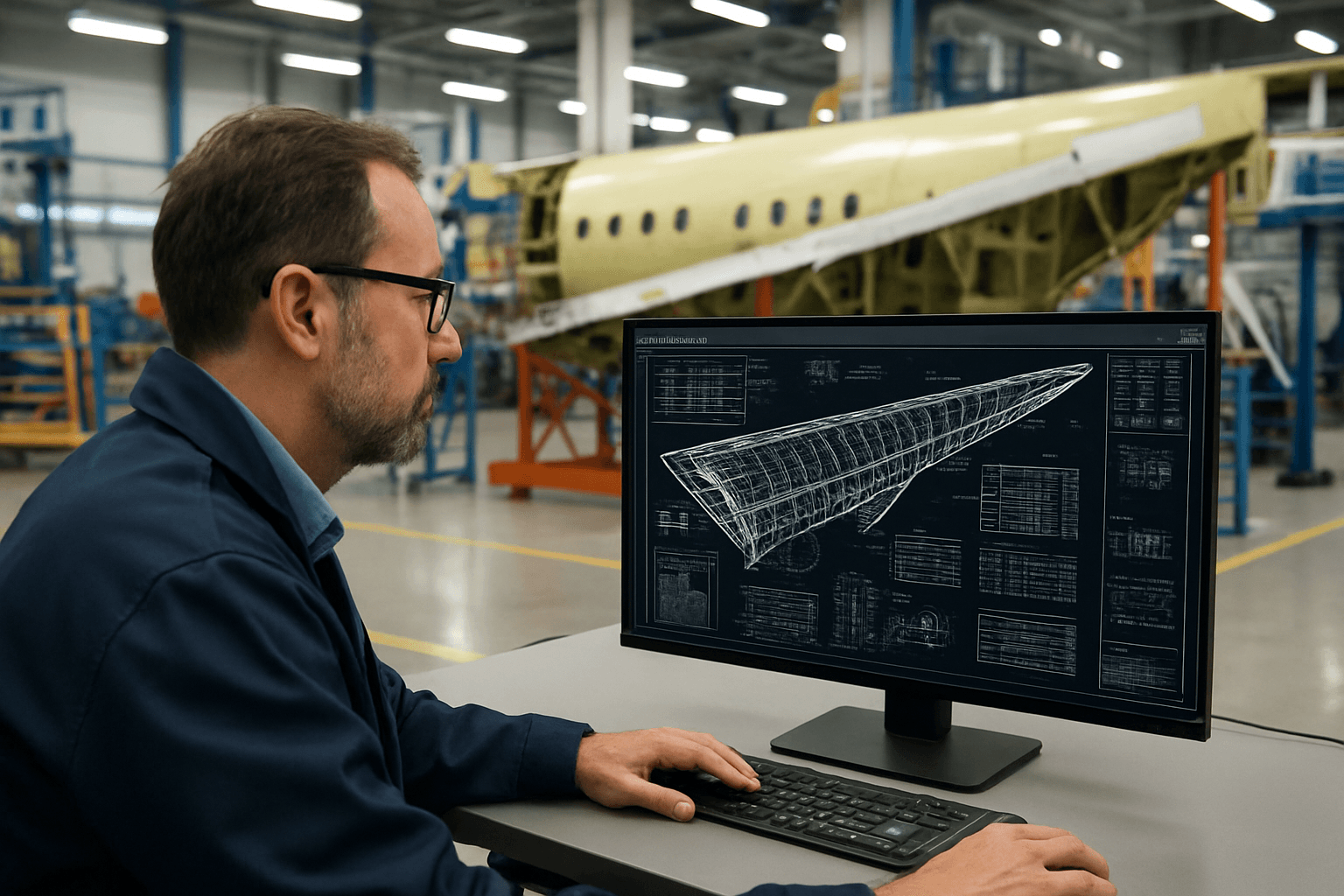Airbus is exploring the possibility of incorporating the A321XLR’s advanced wing design into earlier A321neo models. This move aims to enhance performance, streamline manufacturing processes, and offer operational benefits to airlines already operating the A321neo. The potential upgrade involves retrofitting existing A321neo aircraft with the A321XLR’s wing, featuring a simplified flap system.
Understanding the A321neo Family
The Airbus A321neo (New Engine Option) is a popular narrow-body airliner and a derivative of the A321 and A320neo family. As the longest variant in Airbus’s A320 series, it can accommodate between 180 and 220 passengers in a two-class configuration, or up to 244 in a high-density layout. The A321neo stands out due to its fuel efficiency and extended range.
Several variants of the A321neo exist, each designed to meet specific operational needs:
- A321neo: The base model, equipped with new engines and Sharklets (wingtip devices), offers a 20% increase in fuel efficiency per passenger and an extended range of approximately 4,000 nautical miles (7,400 km).
- A321LR (Long Range): This variant includes additional center tanks to increase its range to 4,000 nautical miles with a capacity of 206 passengers, making it suitable for transatlantic routes. Some configurations can extend this range up to 4,500 nautical miles.
- A321XLR (eXtra Long Range): The A321XLR represents the latest evolution, offering a range of 4,700 nautical miles (8,700 km). This is achieved through a permanent rear center tank (RCT) that holds approximately 12,900 liters (3,400 US gallons) of fuel.
The A321XLR Wing Design: A Closer Look
The A321XLR incorporates several aerodynamic improvements, most notably a single-slotted inboard flap design. This differs from the double-slotted flaps found on the earlier A321neo variants. Airbus originally designed the A321 with double-slotted flaps to enhance lift capability during takeoff and landing due to its longer fuselage compared to the A320.
The key benefits of the A321XLR’s single-slotted flap design are:
- Weight Reduction: The simpler design reduces the overall weight of the wing.
- Improved Aerodynamic Efficiency: The single-slotted flap enhances aerodynamic performance during takeoff.
- Simplified Maintenance: A less complex flap system translates to reduced maintenance time and costs.
Airbus’s Rationale for the Wing Transfer
According to Marc Guinot, A320-family chief engineer, transferring the A321XLR wing design to earlier A321neo variants is under analysis. The potential benefits driving this consideration include:
- Performance Enhancement: The A321XLR wing could improve the takeoff performance of earlier A321neo aircraft. This is particularly beneficial for operations at airports with short runways, high elevations, or hot weather conditions.
- Operational Commonality: Integrating the A321XLR wing could lead to better flying techniques due to increased commonality between the XLR and other A321neo variants.
- Industrial System Simplification: Using a single wing design across multiple A321neo variants could streamline Airbus’s manufacturing and supply chain processes.
Potential Challenges and Considerations
While the proposed wing transfer offers several advantages, Airbus faces some challenges:
- Measuring Performance Improvement: Quantifying the exact performance gains from the wing transfer is complex. The benefits depend on various factors, including specific operating conditions.
- Retrofit Complexity and Cost: Retrofitting existing aircraft with a new wing design is a significant undertaking. It requires careful engineering, certification, and execution, all of which involve substantial costs.
- Weight Considerations: The A321XLR’s rear center tank (RCT) design faced revisions to meet updated certification criteria, including the installation of a lining to mitigate fuel-leak risks. These reinforcements increased the weight by approximately 300kg, slightly reducing the aircraft’s range.
Impact on Airlines and the Market
If Airbus proceeds with the wing transfer, airlines operating the A321neo stand to gain several benefits:
- Enhanced Takeoff Performance: The A321XLR wing improves takeoff capabilities, particularly useful for airlines operating from challenging airports.
- Reduced Maintenance Costs: The simpler single-slotted flap design lowers maintenance requirements and associated expenses.
- Increased Asset Value: Retrofitting A321neo aircraft with the A321XLR wing could increase their value and extend their operational lifespan.
From a broader market perspective, this initiative could:
- Strengthen Airbus’s Competitive Position: By offering continuous improvements to its A321neo family, Airbus can maintain its edge over competitors like Boeing in the narrow-body market.
- Drive Fleet Standardization: The wing transfer could encourage airlines to standardize their A321neo fleets, leading to operational efficiencies and cost savings.
The A321XLR’s Unique Features
Besides the advanced wing design, the A321XLR incorporates other notable features:
- Permanent Rear Center Tank (RCT): This tank, integrated into the fuselage, holds 12,900 liters of fuel, enabling the aircraft’s extended range.
- Strengthened Landing Gear: The A321XLR features a robust landing gear system to support a maximum takeoff weight (MTOW) of 101 tonnes.
- Optimized Trailing-Edge Flap Configuration: This design helps preserve takeoff performance despite the increased weight and range.
However, the design of the RCT has faced some hurdles. To meet updated certification criteria, Airbus had to incorporate a lining to reduce fuel-leak risk in the event of damage to the aft fuselage. This reinforcement added approximately 300 kg to the aircraft’s weight, reducing the range by 50-70 nautical miles. Airbus is actively exploring solutions to regain this lost performance, including procedure tweaks and a potential increase in the A321XLR’s MTOW.
Airbus’s Strategy for Performance Recovery
Airbus is committed to addressing the range reduction caused by the RCT reinforcements. Guinot mentioned that the company has a plan focused on performance recovery. This plan includes:
- Procedure Tweaks: Optimizing operational procedures to improve fuel efficiency and range.
- Maximum Takeoff Weight (MTOW) Increase: Evaluating the feasibility of slightly increasing the A321XLR’s MTOW to compensate for the added weight and regain the lost range.
Historical Context: Evolution of the A321
The A321’s journey began as a stretched version of the A320, designed to increase passenger capacity. The initial variant, the A321-100, entered service in 1994. However, its limited range compared to the A320 led to the development of the A321-200, which incorporated additional fuel tanks and more powerful engines.
The A321neo marked a significant leap forward, incorporating new engine options and aerodynamic enhancements, resulting in a 15% reduction in fuel consumption and an extended range. The A321LR and A321XLR further extended the A321neo’s capabilities, establishing it as a versatile platform for short, medium, and long-haul routes.
Comparing the A321neo Variants
To better understand the differences between the A321neo variants, here’s a comparison:
| Feature | A321neo | A321LR | A321XLR |
| ———————- | ——————————————— | ——————————————————————- | —————————————————————————————————– |
| Range | 4,000 nautical miles (7,400 km) | 4,000 nautical miles (7,400 km), up to 4,500 nm in some configurations | 4,700 nautical miles (8,700 km) |
| Typical Passenger Capacity | 180-220 (two-class), up to 244 (high-density) | Up to 220 (all-economy) | Up to 244 (all-economy) |
| Additional Fuel Tanks | Optional | Three auxiliary fuel tanks (ACTs) | Permanent rear center tank (RCT) with a capacity of 12,900 liters (3,400 US gallons) |
| Wing Flaps | Double-slotted | Double-slotted | Single-slotted inboard flaps |
| Maximum Takeoff Weight (MTOW) | 97 tons | Higher than A321neo | 101 tons |
| Key Benefit | Fuel efficiency and versatility | Extended range for transatlantic routes | Ultra-long-range capability, opening new point-to-point routes previously served by wide-body aircraft |
The Future of the A321neo Family
Airbus’s potential transfer of the A321XLR wing to earlier A321neo variants reflects the company’s commitment to continuous improvement and innovation. By leveraging the advanced design of the A321XLR, Airbus aims to enhance the performance, efficiency, and operational capabilities of its A321neo family, solidifying its position as a leader in the narrow-body market. The decision to implement this change is estimated to occur before the end of this decade.





